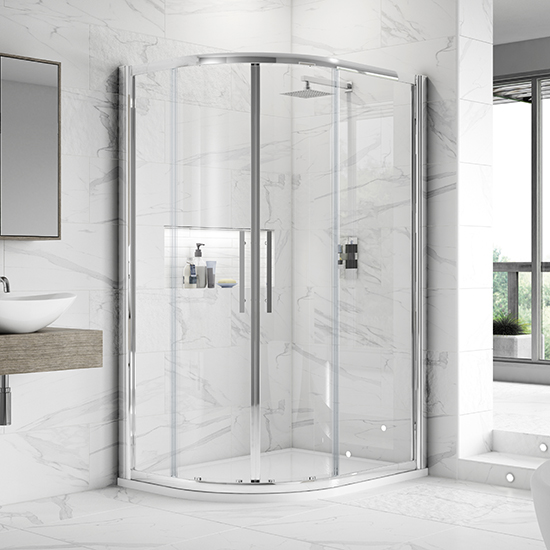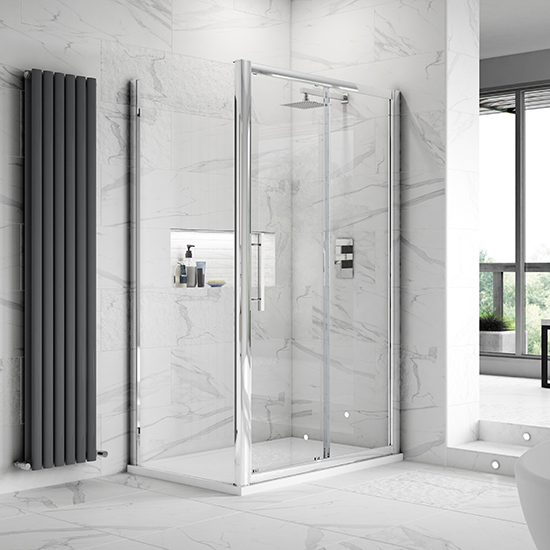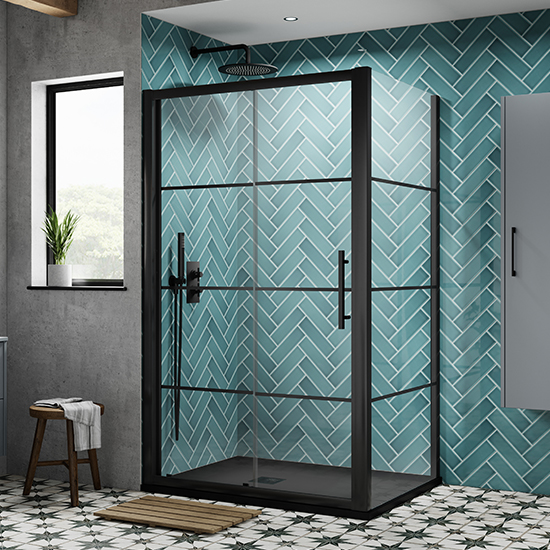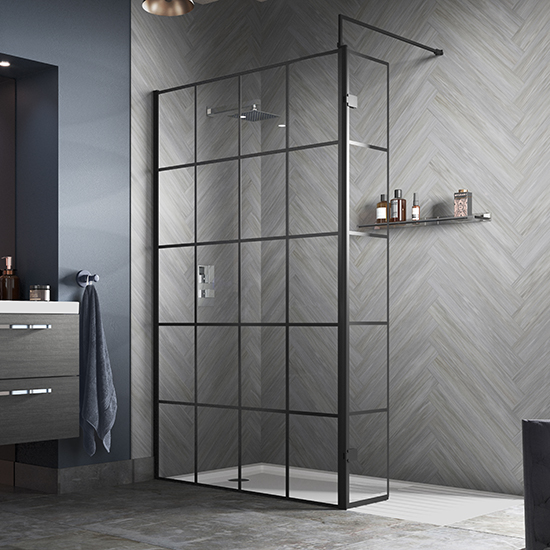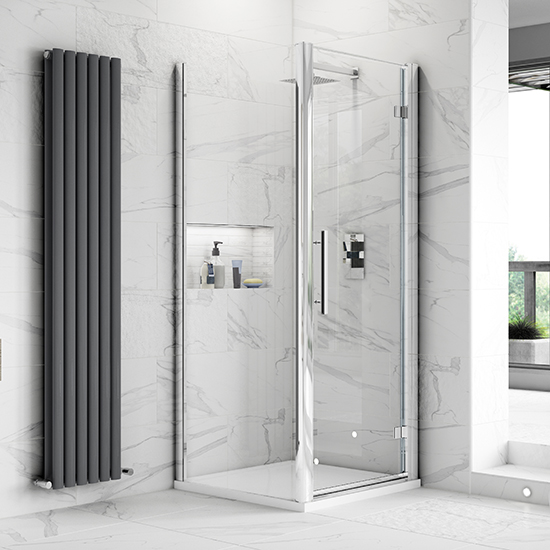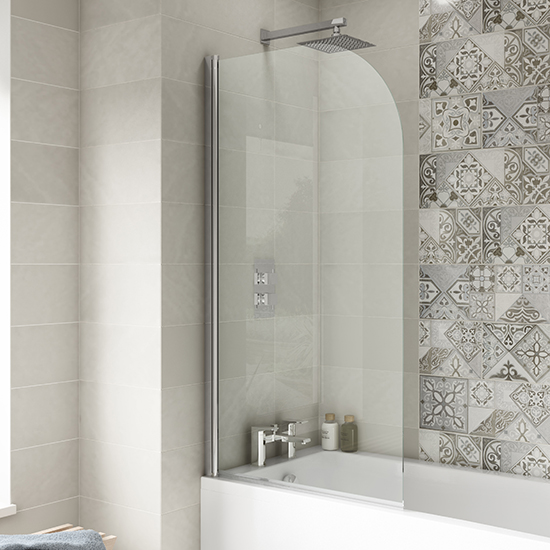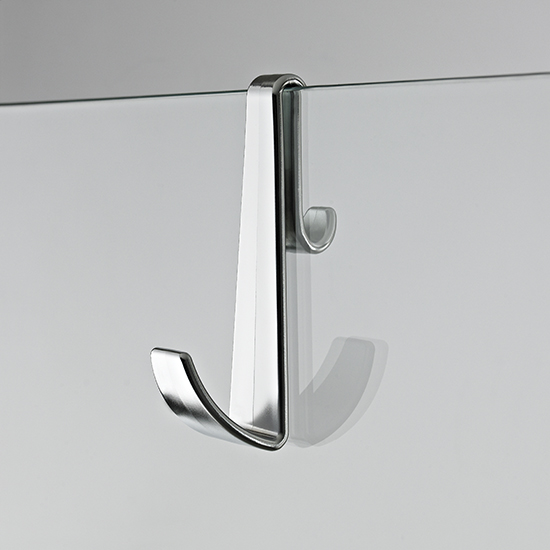Quality Shower Enclosures From Hudson Reed
We have a stunning range of shower enclosures with wetroom, sliding, bath screens, quadrants and many more. We also have a full range of shower trays in white, slate grey and black to accompany the screens and enclosures.
How to Choose the Right Shower Tray and Enclosure
Shower enclosures come in all shapes and sizes. They can be fixed, like a traditional quadrant-style enclosure that sits flush against the walls, or they can be freestanding with their own frame. Either way, you need to consider how big the enclosure will be, where it will go in your bathroom, and what sort of shower screen you want before making any decisions.
A great way to pick out your new shower is to sit in the bathtub. Take note of the space around you, including the height of the ceiling, if there’s an overhead light fixture, and whether any other fixtures are present. Once you have those basics covered, you can move on to the next step.
The Size of Your Bathroom
Your first thought should probably be to take into consideration the size of your existing bathroom. If your current space is small, or you’re looking to add more square footage to your bathroom, then a freestanding enclosure might make sense. You could also consider placing the enclosure closer to the wall, but this may not be possible depending on where your pipes are located.
On the other hand, if your bathroom is large enough to accommodate a full-size enclosure, then why bother? In this case, you’ll be able to enjoy the benefits of both options without sacrificing much space.
Location.
Now that you know how big your bathroom currently is, you can consider where you’d like to place the enclosure. If you’re planning on renovating your bathroom or adding on to it, then you’ll likely need to put up some drywall at some point. That means you’ll need room to cut through the drywall to run plumbing lines and install electrical outlets, along with running your water supply line.
You’ll also need to consider how far away from the wall your enclosure will be placed. Will it be directly adjacent to the wall, or will it sit further back? Also, do you plan on putting the enclosure near another doorway, such as a closet? These factors will determine how far you need to push the drywall.
The Correct Shower Screen
There are three main types of screens available for shower enclosures today: sliding doors, glass panels, and mesh screens. Each has its pros and cons, so which one is best for your needs depends largely on personal preference. Here’s a brief overview of each type:
Sliding Door Shower Screens — These screens are typically made of stainless steel or aluminum panels. They feature either a recessed lip at the bottom or a flat edge. They slide horizontally and vertically, allowing you to open them up to see behind them.
Glass Panels — Glass panels are similar to sliding doors in terms of how they operate, except they’re usually only half as wide and are installed horizontally rather than vertically. Because they’re glass, they allow sunlight to pass through them.
Mesh Screens — Mesh screens are similar to glass panels in that they’re transparent, but they differ from glass because they don’t let sunlight through. Instead, they trap air inside the enclosure and reduce heat loss.
Which One Is Best For You?
If you want to block out noise, then glass panels are the way to go. They’ll keep the sound contained within the enclosure, preventing it from being transmitted to other parts of the house. On the other hand, if you prefer to take a walk outside while taking a shower, then you may want to opt for a mesh screen instead. It won’t restrict the view, but it will prevent the sound from escaping.
Water Pressure
Before you get too excited about installing a fancy shower enclosure, you’ll need to figure out the pressure of the water coming into your house. Depending on the city or region that you live in, you may need to upgrade your plumbing to handle higher water pressures.
Some municipalities require homes to have a minimum amount of pressure coming in. Check with your local building officials to ensure that your home meets these requirements before you purchase anything.
Budget
Once you’ve considered the above factors, you can start thinking about price. There are hundreds of different models available on the market, ranging anywhere from £50 to thousands of pounds. Some people choose to DIY their projects, while others hire professional contractors to build them for them. Whatever your budget is, though, you’ll need to decide exactly what you want before purchasing a shower enclosure online or in a store.
Other Considerations
While most shower enclosures come equipped with everything you need, sometimes you need to make a custom order. For example, if you want to use a different colour trim than the ones included in the package, then you’ll have to contact the manufacturer directly to inquire about special orders.
Also, if you want to incorporate a skylight or window into your enclosure, then the manufacturers will have to custom-build them for you. Depending on the complexity of the design, this can take anywhere from a day to several weeks.
Finally, if you want to buy an enclosure online, you’ll want to make sure that you’re dealing with someone reputable. Unfortunately, many companies sell cheap products and then charge exorbitant shipping costs. Look for free delivery and a company that offers a money-back guarantee in addition to providing outstanding customer service.
Whether you’re planning on renovating your bathroom or just refreshing your shower, you’ll need to consider all of the above factors before choosing a suitable enclosure. Use our guide above to help you narrow things down and find the perfect enclosure for your home.

